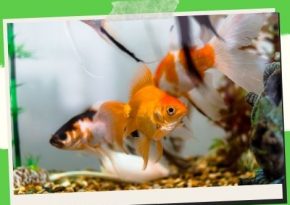
Including an Oyster in a Saltwater Aquarium’s Ecosystem
Saltwater aquariums may be a beautiful addition to a house and are a never-ending source of intrigue for both young and old. Exotic and attractive, the various fish and plant species that can coexist in a saltwater aquarium offer a thorough introduction to life beneath the sea. However, there are other creatures that may be found in the deep sea besides fish and plants, and aquarium owners are increasingly attempting to include these other creatures in their own aquariums.
For a long time, home aquariums have included artificial oysters that open up and release bubbles into the water. Live oysters are increasingly being used in saltwater aquariums due to the aim to accurately replicate the ocean floor. A pearl-producing oyster may occasionally be offered as an addition to a home aquarium; but, more often than not, their less productive relatives end up staying there permanently. The owner of the aquarium must be certain that they are ready to make these alterations before inserting the oyster into the aquarium because scallops and oysters have more specific needs than many of the inhabitants of the home aquarium.
Oysters don’t do well in dirty tanks because they need highly “pristine” water conditions to thrive. If their water becomes clogged with trash, the oyster won’t last very long. Fortunately, the oyster filters the water as well, so this might even out. Additionally, they have particular dietary requirements that cannot be satisfied by the common meal served to many saltwater creatures. They will require a particular organic diet that may be injected upstream of the oyster and was created especially for filter feeders. If an aquarium owner doesn’t have a lot of free time on their hands, it could be a good idea to reduce the oyster population in their aquarium to a minimal because each oyster needs to be fed separately. Phytoplankton, a small part of plankton that floats through the water, is also needed as a dietary supplement for these invertebrates.
It has been demonstrated that some varieties of oysters do better in captivity than others. The novice would be well advised to start with these breeds before moving on to the more delicate oysters as they acquire more used to their requirements. The spiny oyster and the thorny oyster are typical aquarium oysters; these odd but appropriate names for these lovely and distinctive critters.
For additional information on adding an oyster to a home aquarium, customers may contact the businesses who offer them. Oysters are a demanding but lovely addition to any aquarium at home. When trying to remove an organism from its native environment and watch it thrive, keep in mind that no detail is too little.
Save/Share this story with QR CODE
Disclaimer
This article is for informational purposes only and does not constitute endorsement of any specific technologies or methodologies and financial advice or endorsement of any specific products or services.
 Need to get in touch?
Need to get in touch?

We appreciate your reading. 
1.) 

Your DONATION will be used to fund and maintain NEXTGENDAY.com
Subscribers in the Philippines can make donations to mobile number 0917 906 3081, thru GCash.
3.) 
4.) 
AFFILIATE PARTNERS

World Class Nutritional Supplements - Buy Highest Quality Products, Purest Most Healthy Ingredients, Direct to your Door! Up to 90% OFF.
Join LiveGood Today - A company created to satisfy the world's most demanding leaders and entrepreneurs, with the best compensation plan today.

 Business, Finance & Technology
Business, Finance & Technology

 Business Technology, Finance Technology & Information Technology
Business Technology, Finance Technology & Information Technology




